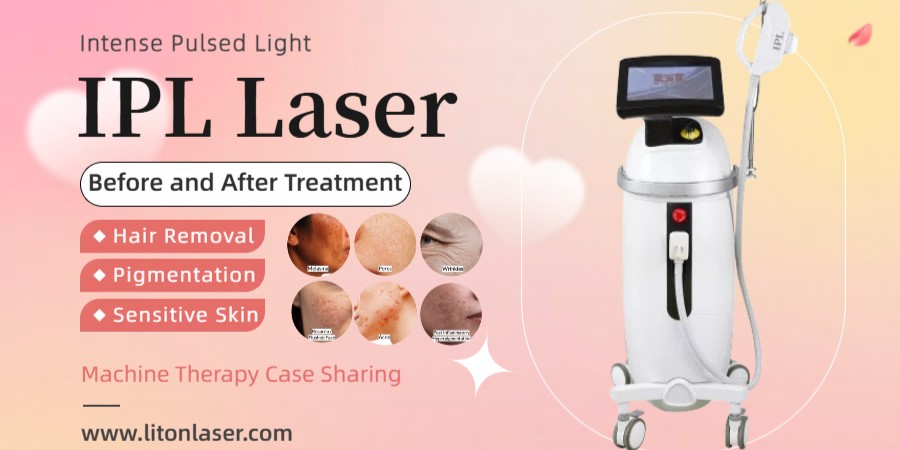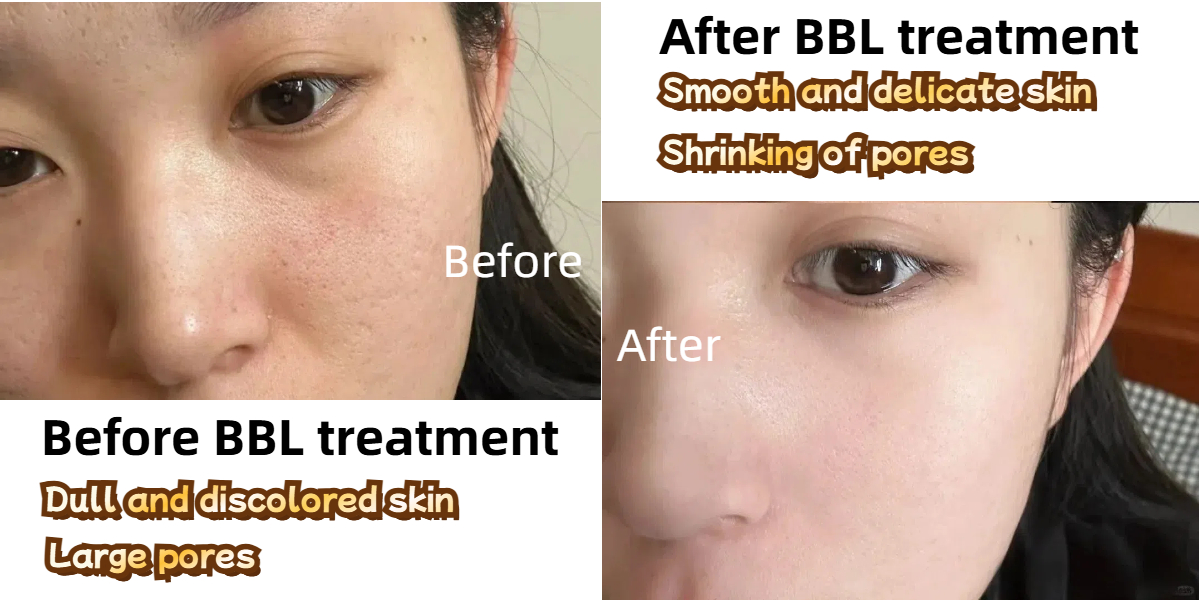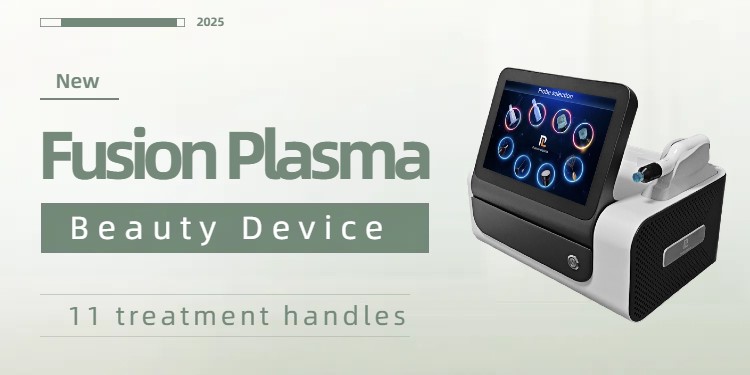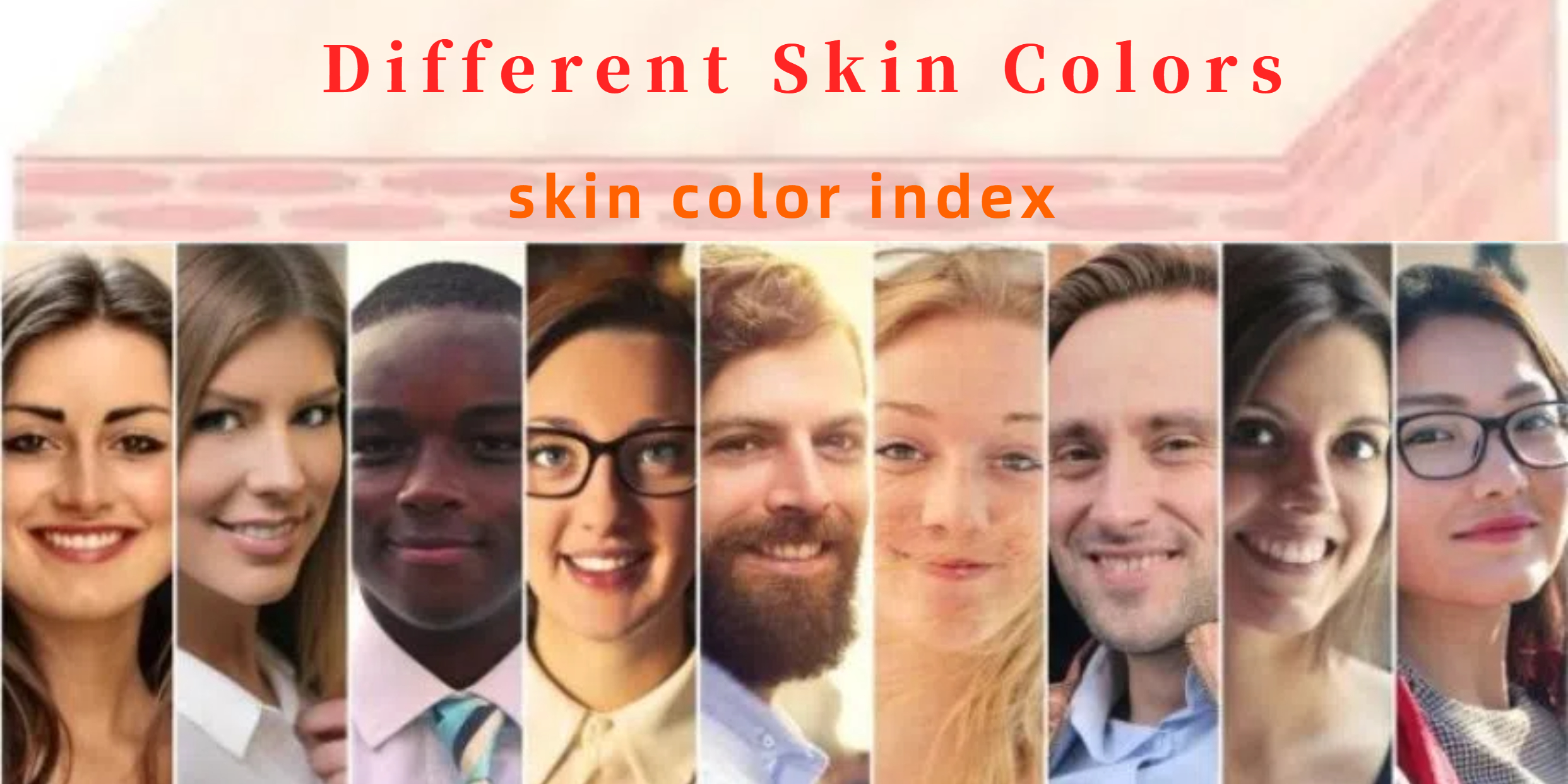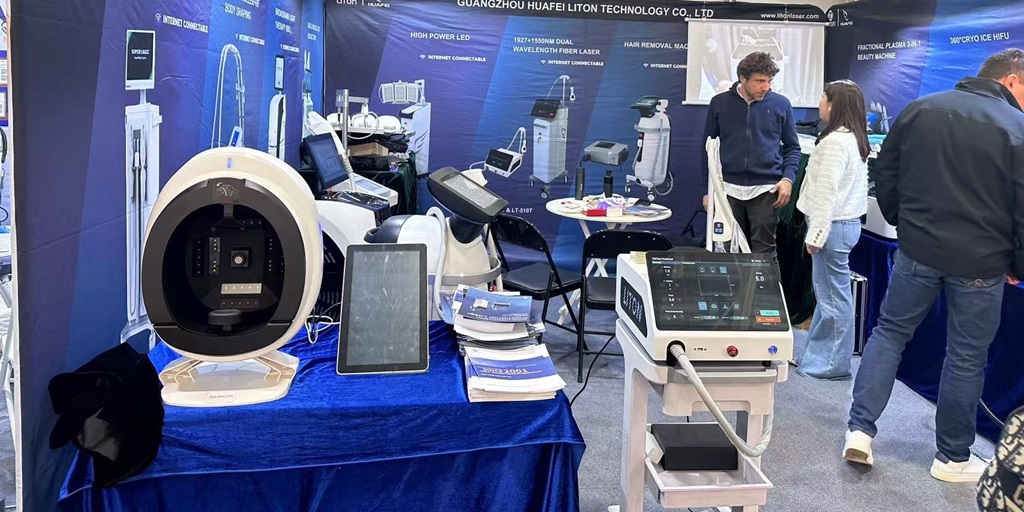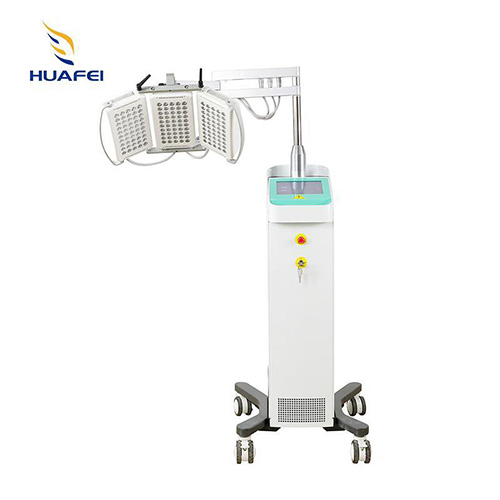1.Basic overview of LED Phototherapy beauty equipment.
LED Phototherapy beauty machines have always received widespread attention, and different colors of light will have different beauty effects.
Because different wavelengths reach different levels of the skin, LED Phototherapy Equipment uses heating to produce different photothermal effects at different skin levels, and the human skin also begins to undergo a series of reactions.
In general, skin Phototherapy is a physical therapy method that uses light radiation to treat skin diseases or perform beauty treatments. It includes visible light, infrared light, ultraviolet light, photochemotherapy, laser therapy and other forms.
1.1 The mechanism of action of PDT visible light in skin phototherapy.
The mechanism of action of visible light in skin phototherapy mainly involves the effects at the molecular, cellular and tissue levels. The light energy emitted by the phototherapy device is absorbed by chromophores in skin cells and converted into heat and chemical energy. These chromophores include hemoglobin, myoglobin, cytochromes, flavins, flavoproteins and porphyrins. Among them, the common target chromophore in skin tissue is cytochrome C oxidase (CCO) containing iron and copper, which is located in the mitochondrial respiratory chain.
Cytochrome oxidase is an enzyme responsible for the key steps of cellular respiration and controls the final chemical reaction of the process. Light promotes the dissociation of nitric oxide (NO) from cytochrome C oxidase (CCO), allowing oxygen to bind to it again and enhance the activity of the respiratory chain, enhance enzyme activity, affect electron transfer, and promote mitochondrial respiration and the generation of adenosine triphosphate (ATP). In addition, by regulating reactive oxygen species (such as singlet oxygen species), light will further change the redox state of cells, induce the activation of multiple signal transduction pathways in cells, and change the levels of transcription factors related to cell proliferation, survival, tissue repair and regeneration.
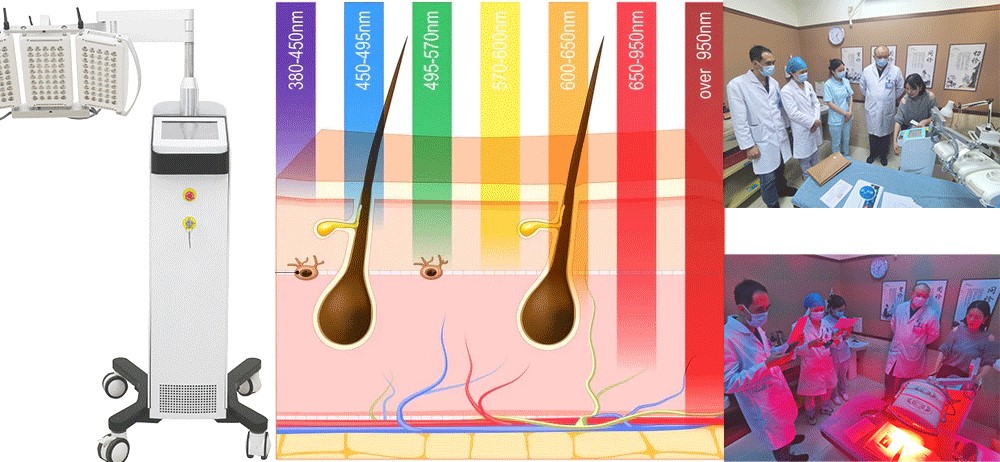
1.2 Application areas of PDT skin phototherapy.
1.2.1 Skin aging.
The wavelength range of the light source used for treatment is 630~850 nm, mainly 630~660 nm. The light source dose varies depending on the irradiated area, and both pulsed and continuous light modes are used. Studies have shown that LED phototherapy can increase skin vascular microcirculation, affect the production of platelet-derived growth factor (PDGF) and transforming growth factor (TGF-β), and inhibit cell apoptosis.
1.2.2 Inflammation.
The wavelength of the light source used to reduce inflammatory response is 560~660 nm, and the dosage ranges from 0.1~17 J/cm2. Both continuous and pulse modes are used. Studies have shown that LED phototherapy has an anti-inflammatory effect by inhibiting the synthesis of PEG-2.
1.2.3 Acne.
The pathogenesis of common acne has not yet been clarified, mainly involving four factors: excessive keratinization of follicles, increased sebum secretion affected by androgen secretions, colonization of Propionibacterium acnes, and inflammation. Phototherapy has been proposed as an alternative to drugs for the treatment of common acne. Acne is usually treated with a combination of red and blue light. The mechanism is that Propionibacterium acnes synthesizes and stores endogenous porphyrins, the main components of which are coproporphyrin III and protoporphyrin IX, with an absorption peak of around 415 nm. Therefore, once the above porphyrin is exposed to visible light (especially blue light), it will be photoexcited to form reactive free radicals and singlet oxygen, which will cause membrane damage to Propionibacterium acnes and induce bacterial death; on the other hand, red light will affect the sebum secretion of sebaceous glands and change the behavior of keratinocytes, while regulating the cytokines of macrophages and other cells.
1.2.4 Wound healing.
Similar to improving skin aging, light irradiation accelerates wound healing by promoting cell proliferation and collagen production and increasing local blood circulation, in which fibroblasts play an important role. The light source parameters used in the treatment of wound healing are similar to those of skin aging, and continuous light therapy is the main method. Studies have shown that LED light therapy can significantly increase the speed of wound healing.
1.2.5 Scars.
Hypertrophic scars and keloids are benign skin tumors that are usually formed after surgery, trauma or acne and are difficult to eradicate. Fibroblast proliferation and excessive collagen deposition are their two main characteristics. The light source used to treat scars is mainly near-infrared light above 800 nm, and the irradiation mode is mainly continuous light. Studies have shown that LED phototherapy can significantly reduce the formation of postoperative scars.
1.2.6 Photoprotection.
Red light/infrared light responds to light damage by promoting collagen secretion of fibroblasts and reducing MMP production; and by stimulating keratinocytes, releasing nerve growth factor (NGF) and its gene expression. NGF can protect melanocytes from UV and induce cell apoptosis by upregulating BCL-2 levels in cells. The wavelengths of light used for photoprotection are mainly 630~660 nm red light and infrared light, and the irradiation mode is mainly continuous light. Studies have shown that LED phototherapy can significantly reduce the amount of erythema after UV irradiation.
1.2.7 Inhibition of melanin production.
The wavelengths of the light sources used for melanin inhibition treatment are mainly 585 nm yellow light and 660 nm red light, and the dose is 20 J/cm2, mainly continuous light. Studies have shown that LED phototherapy can inhibit the activity of tyrosinase induced by melanocyte stimulating hormone and reduce the expression of MITF and tyrosinase in B16F10 cells.
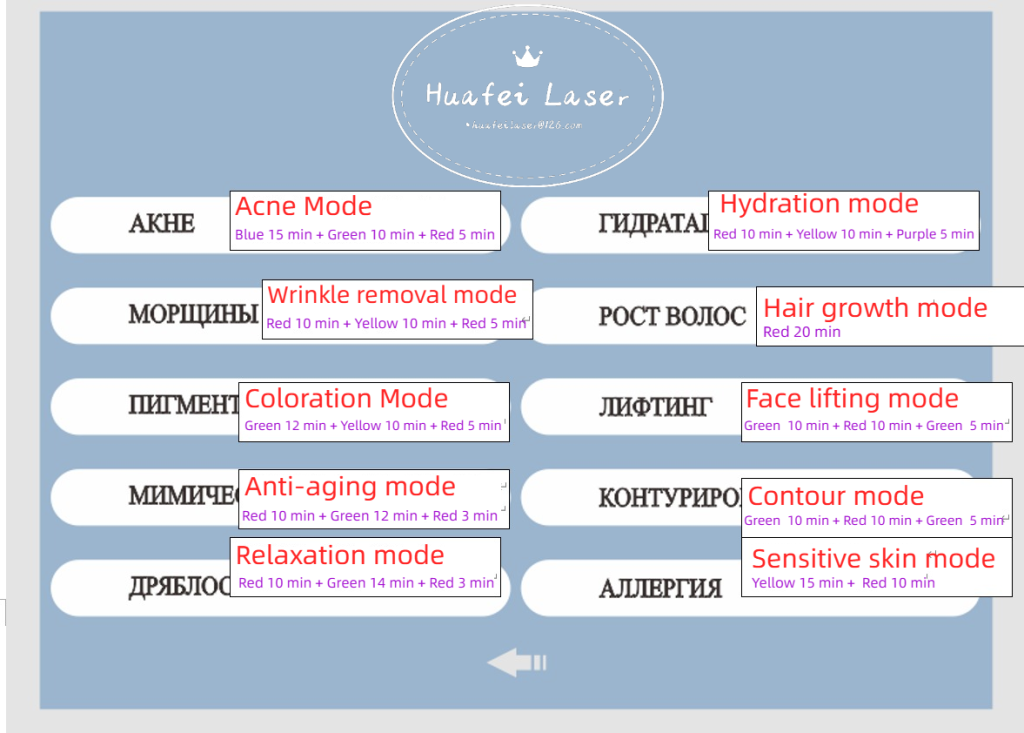
2.The role of different colors of light in LED phototherapy beauty machines.
2.1 LED red light benefits.
Repair, Anti-inflammatory, Anti-aging, Hair growth. Wavelength 635-670nm can be fully absorbed by fiber cells, enhance cell viability, repair damaged cells, promotes collagen production and elasticity, smooth the skin. Simultaneously, good treatment results can also be obtained in removing pigmentation and reducing sun damage.
2.2 LED blue light benefits.
Wavelength 470nm, when LED blue light illuminates acne, it can effectively apply almost all of its energy to the target, P. acnes. Eliminate P. acnes by stimulating porphyrins in the skin enzyme and release a large amount of singlet reactive oxygen species, thereby removing inflammation and acne. In addition, blue light can also inhibit the secretion of exuberant sebaceous glands and balance skin oil secretion. Not only can effectively remove acne, but also improve the problem of large pores.
2.3 LED green light benefits.
Wavelength 540nm, natural and soft light color has the effect of neutralizing and calming nerves, can improve anxiety or depression. It can regulate the function of skin glands, effectively clear the lymphatics to remove edema, improve oily skin, acne and so on.
2.4 LED yellow light benefits.
Wavelength 570-600nm stimulates collagen regeneration and whitens skin. It has an active effect of accelerating blood circulation, activating cells, and stimulating cell excitability; it can promote collagen synthesis, enhance collagen fibers and elastic fibers of the skin, and terminate and stop the redness of the skin.
2.5 LED Near-infrared benefits.
Wavelength 800-900nm light relieves pain, promotes the growth of epithelial cells after trauma, promotes wound healing, and promotes the repair of eczema dermatitis. The Wavelength 580-850nm range of equipment has a certain effect on skin collagen stimulation, skin rejuvenation and pore shrinkage.
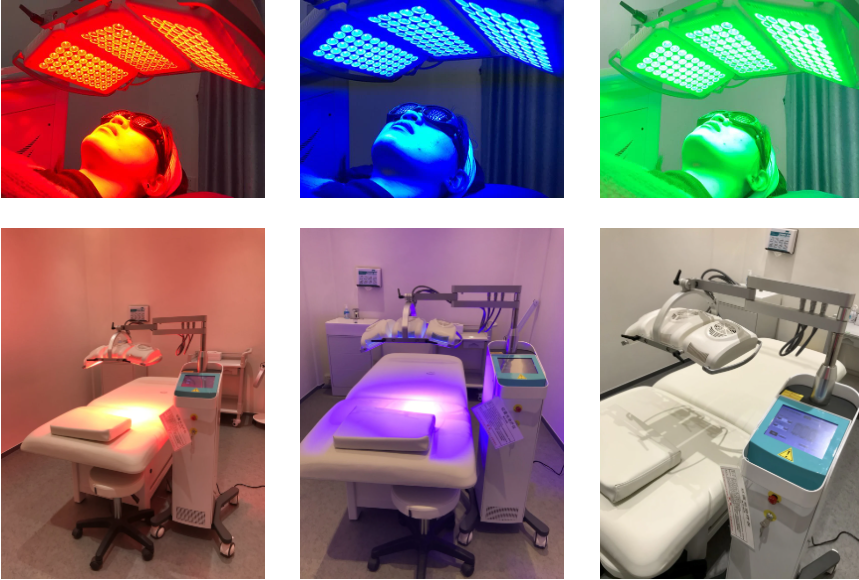
3.Medical clinical application of LED light therapy PDT beauty machine.
3.1 Dermatology.
Skin herpes, eczema, dermatitis, melasma, allergic skin, etc.
3.2 Wound repair.
Trauma, orthopedics, surgery, burns and other difficult-to-heal wounds,Various ulcers, bedsores, diabetic wounds, fistulas and other chronic wounds.
3.3 Rehabilitation therapy.
Treatment of various injuries, strains, sports injuries, and various pains.
4.Learn more about LED light therapy PDT skin rejuvenation machine.
Litonlaser is a professional beauty instrument factory, producing LED phototherapy equipment with High Power 3w per SLD color light.
The efficacy of LED depends largely on the strength of energy. Litonlaser is a 20-year-old beauty instrument supplier, and the quality can be fully guaranteed.
In addition to red light, blue light, green light, yellow light, and infrared light, purple light, white light, and orange light can also be added.
In addition, we have also developed the latest 1927nm thulium laser, which is a new beauty technology. We are the first manufacturer in China to develop 1927nm thulium laser.
For more information, please feel free to contact us:CONTACT US – Beauty Machine Manufacturer LitonLaser


